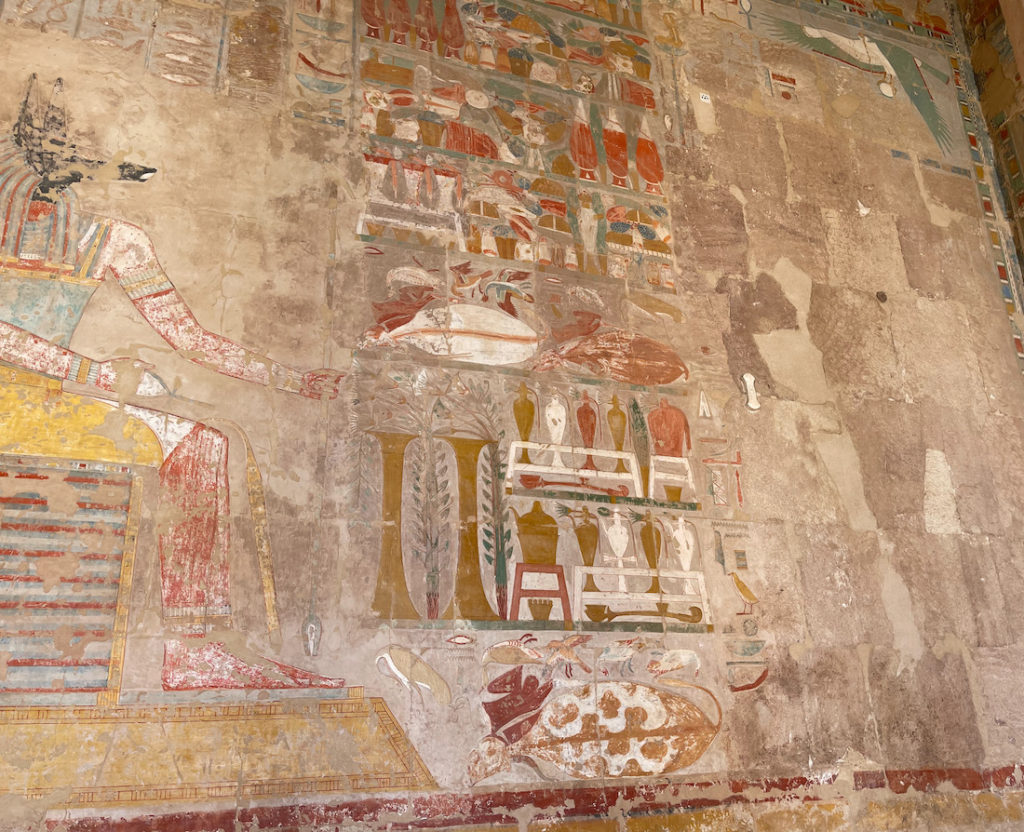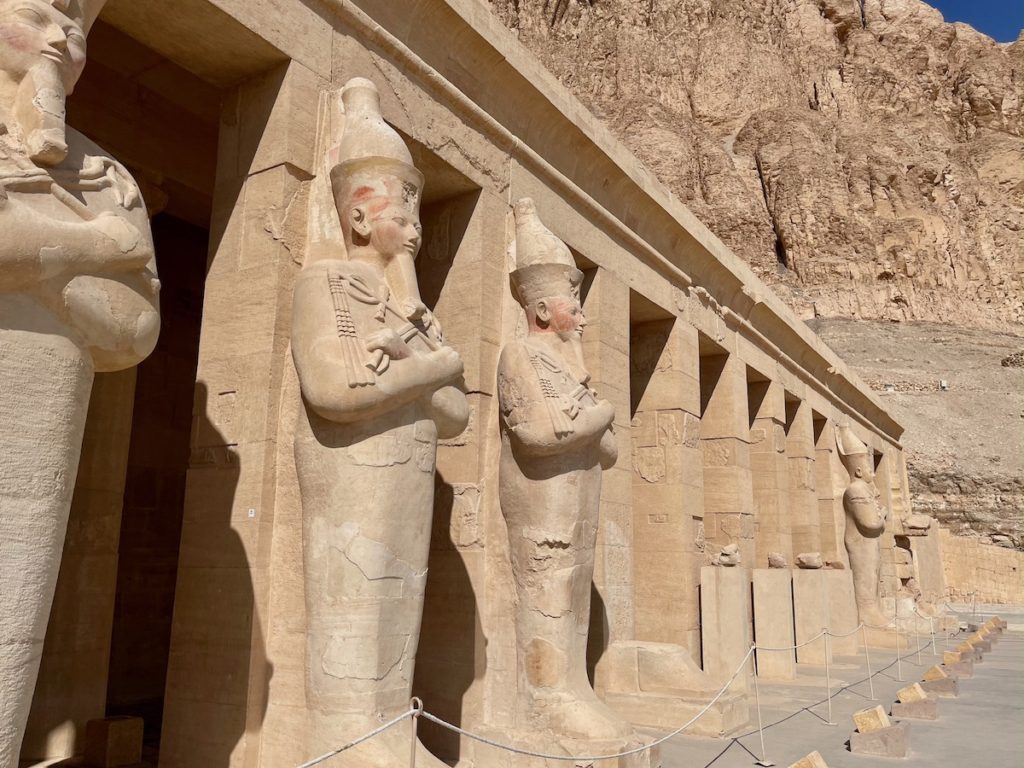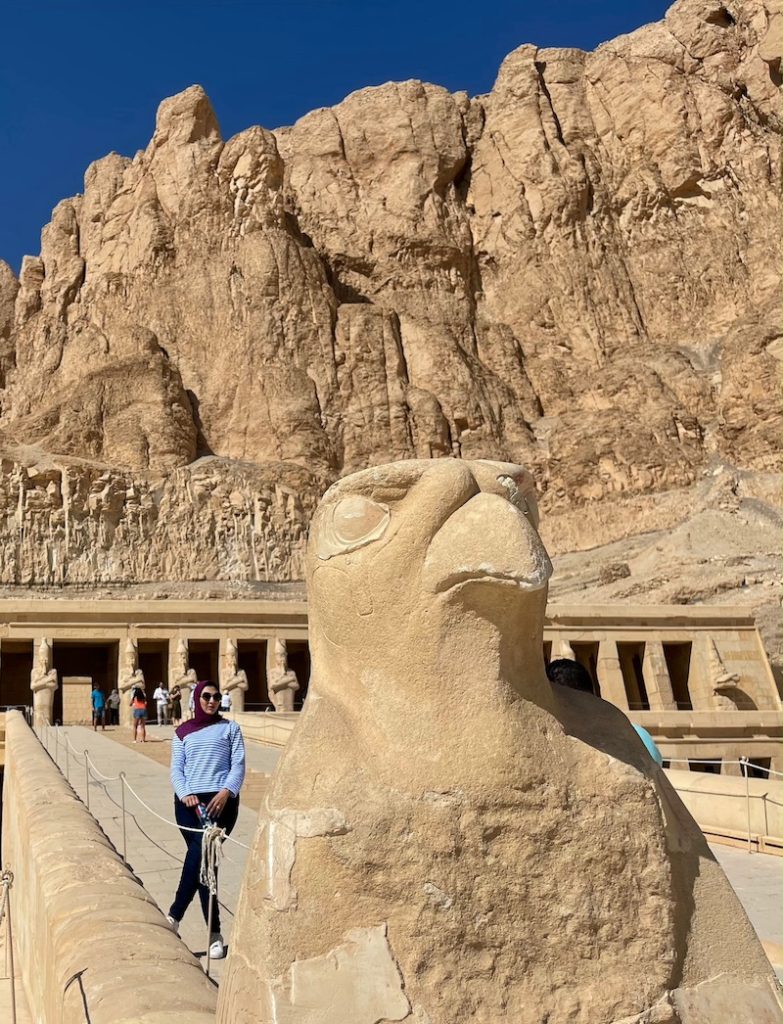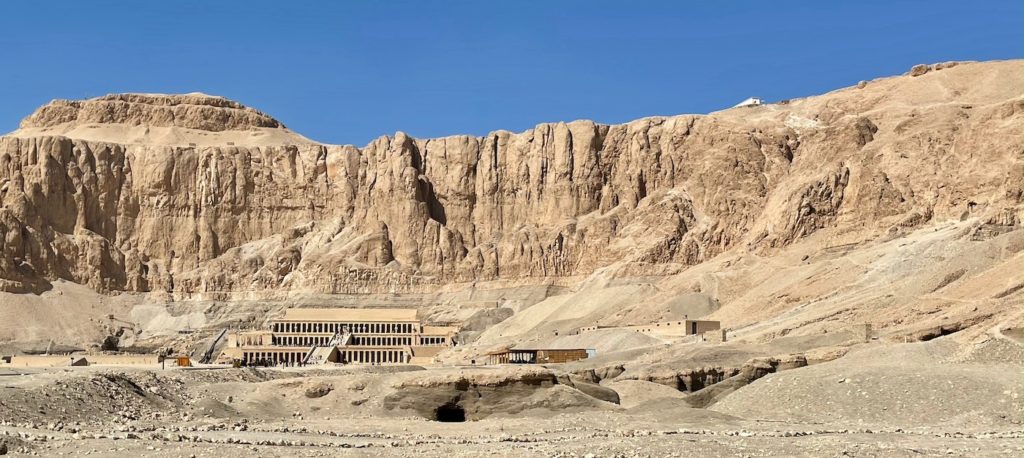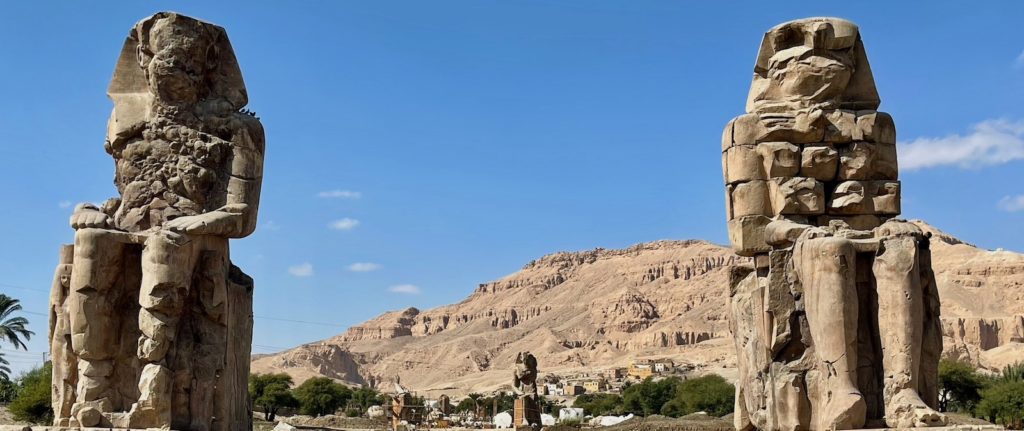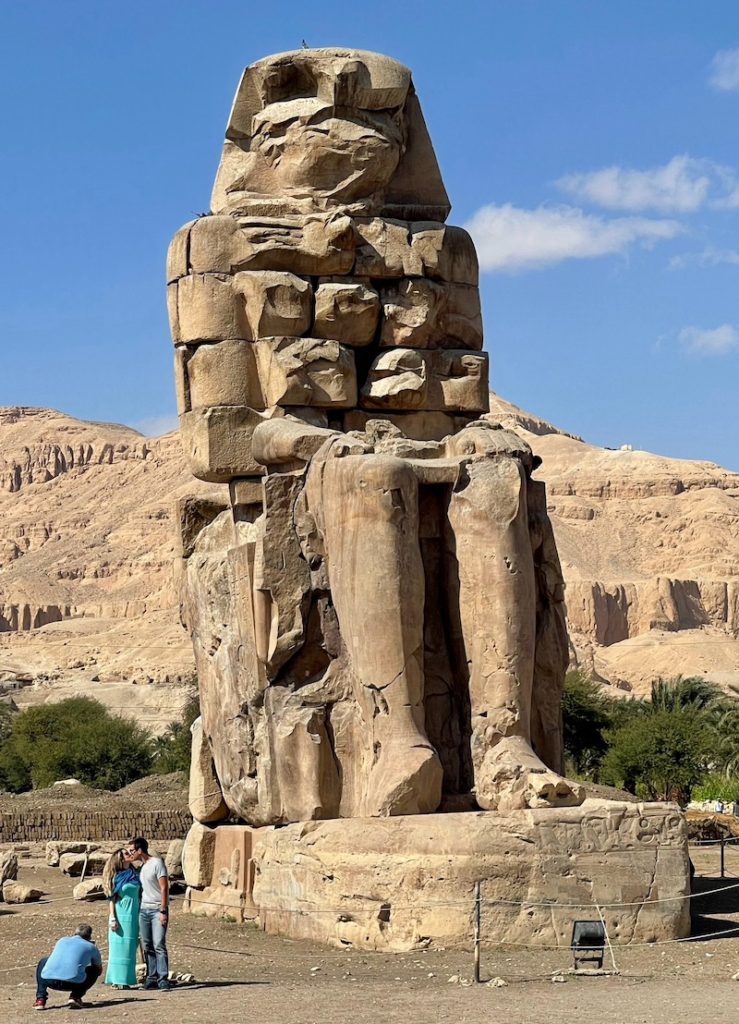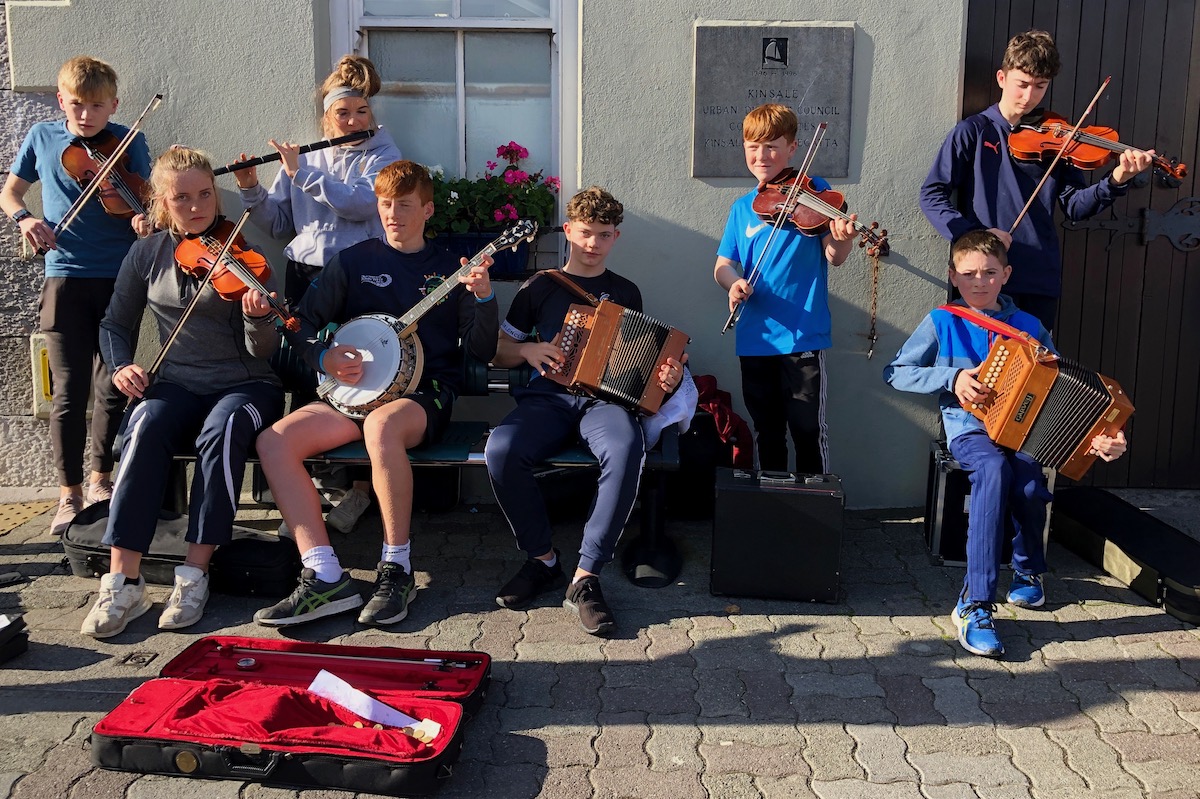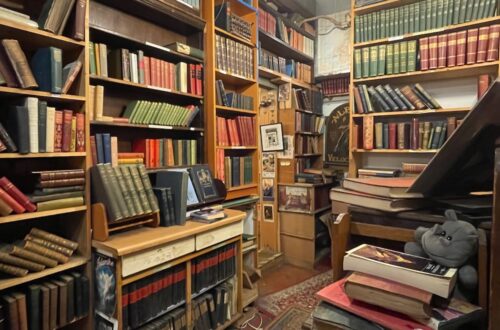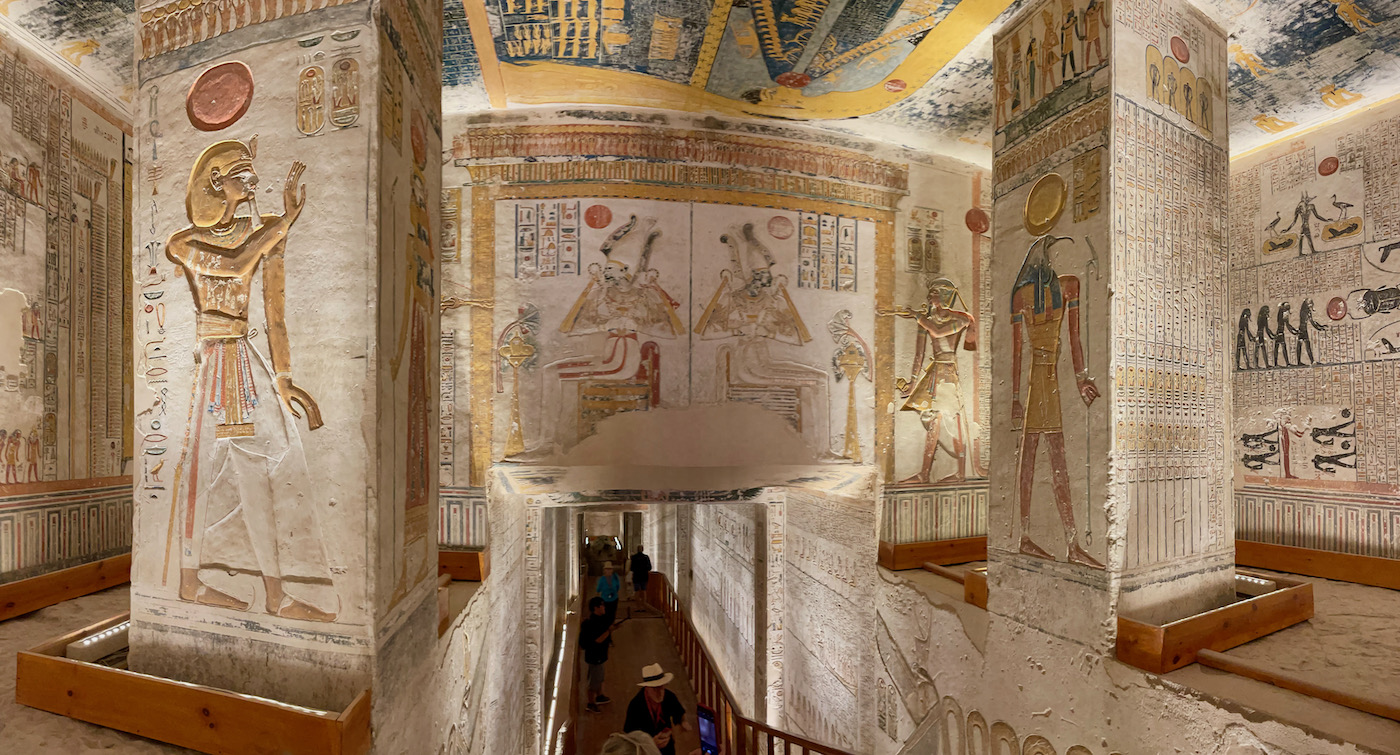
Ancient Egypt: Mummy Adventures in the Land of the Dead, and a Mystery
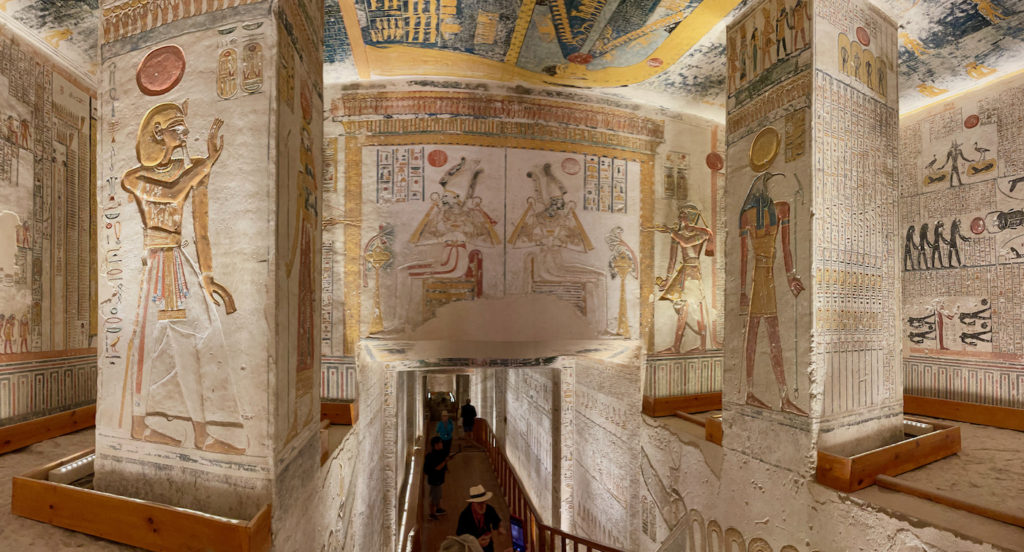
If I need to get Padre’s attention, all I have to do is say ‘The Land of the Dead’ and he perks right up.
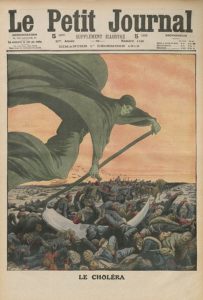
That’s because he’s been intrigued with all things funerary since his early years, when he worked in a local funeral home to afford college. He dealt with caskets, bodies, the works – and considered a funeral career before veering off into ministry and chaplainship. He spent his career years serving the elderly, where his calming presence was much appreciated by those facing end-of-life issues. Which is all of us, eventually, of course. I mean, no one gets out of here alive, right?
The Egyptians were much more in tune with this truth than we modern types, who like to pretend the Grim Reaper is never going to knock on the door for us. The Egyptian pharaohs, though? They were often more than ready for that knock after spending their ruling years embellishing their tombs as soon as they assumed the crown.
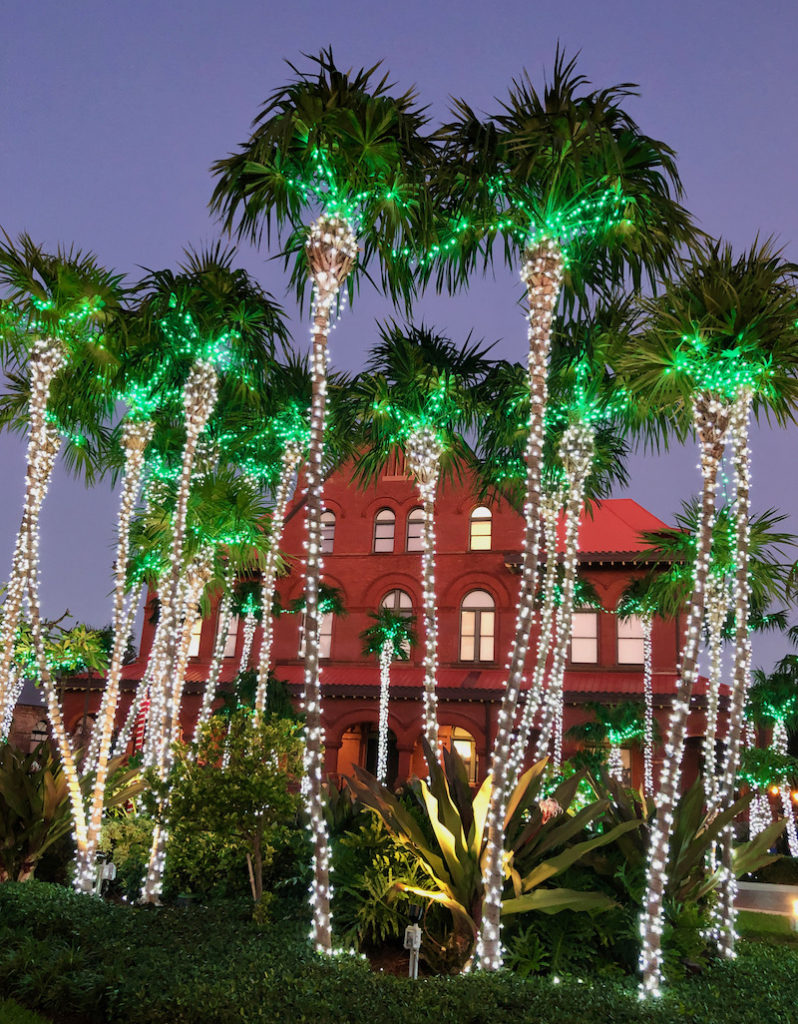
And Happy Winter Solstice Day by the way! A perfect day to take a deep dive into Egypt’s Land of the Dead in the Valley of the Kings, because guess what we found prominently featured on the walls of the dead pharaohs’ tombs?
The SUN.
On the Winter Solstice, humans still build roaring bonfires to ward off the darkness, as the life-giving sun threatens to sink away forever. If we didn’t know how the story ends (thank you science), we might be completely terrified. I mean, who wants to be abandoned to eternal darkness? Not me.
So the ancients had good reason to be frightened as the sun sank and their fields withered. Cultures throughout history have participated in rituals to ward off the darkness, and we’re no different. In western cultures we celebrate the sinking sun’s return in great bursts of hope – think glowing candles and twinkling Christmas lights – just as the ancients did since the beginning of recorded history.
So in one way, it makes sense that in Egypt’s Land of the Dead we find the sun prominently featured, since the sun is the world’s universal symbol of rebirth and regeneration. Yet in the Valley of the Kings’ underground tombs, we also startled at death images around every dark corner, including Gods of the Underworld, black snakes and jackals, rows of decapitated dead men upside-down (upside down makes them more conquered), and a tattered mummy, dark-stained and definitely expired (poor Tut).
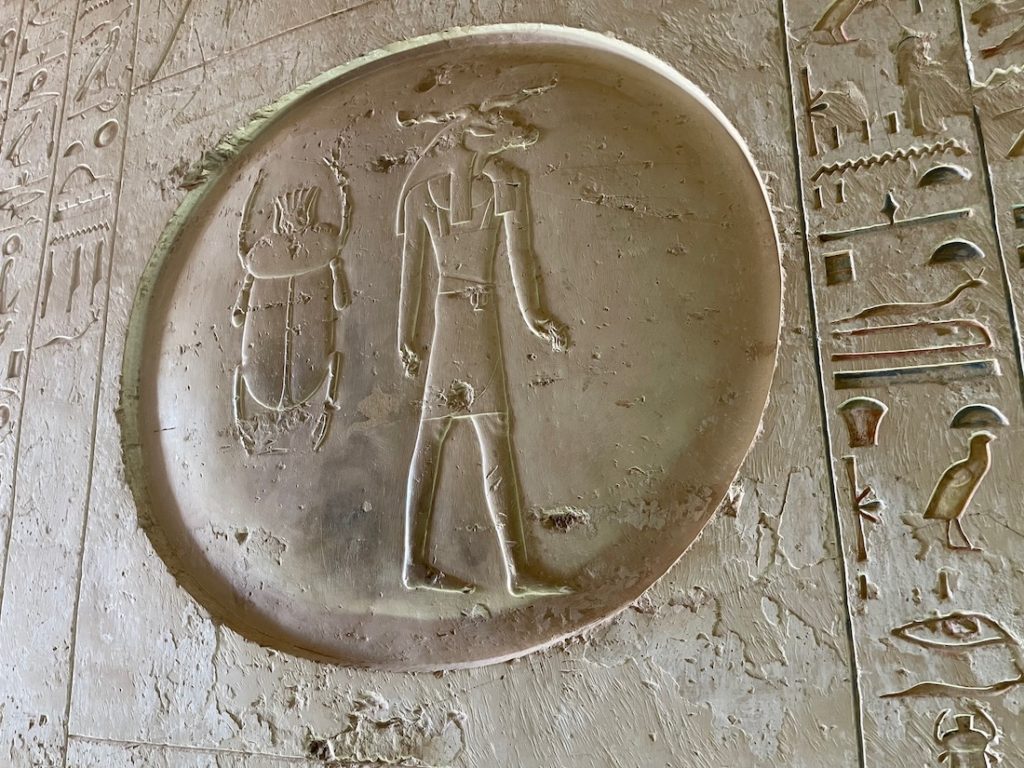
And yet. What we learned during our time in the Land of the Dead was that the Egyptian way of death was all about LIFE, and Egyptians’ reputation as death worshipers is just plain wrong. We also learned that tips in Egypt make impossible things happen (we already knew that, but hey). And just when we thought all the treasure, mummies, and gold had been hauled off or dug up, well, maybe not. What IS behind that wall right behind where poor Tut lays in not-so-peaceful repose, anyway?
OUR JOURNEY TO THE LAND OF THE DEAD
We started our day before sunrise, an early hour that led to grumbling from a few Gate1 fellow travelers. The early hour was tempered by the cheer of our Queen of Hansa breakfast waiters, always smiling even at the most ungodly hours.
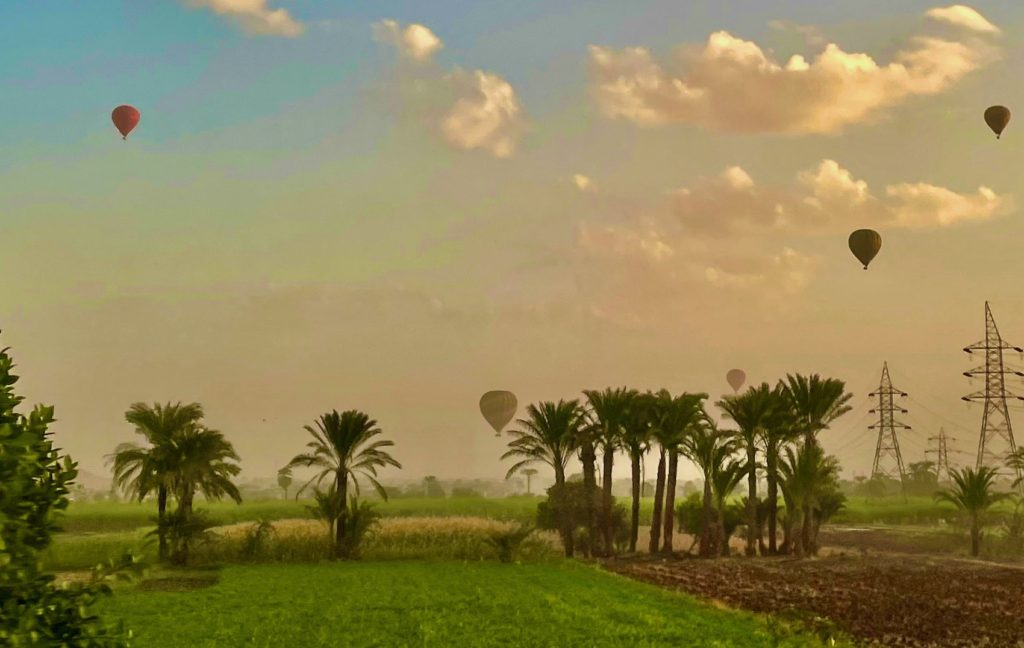
But hey – reasons. Early is the only way to go if you’re headed for the Valley of the Kings, especially if you hope to enter the tombs before crowds descend. Ours was one of the first buses in the empty parking lot, in fact, and we know crowds came after us since we had to navigate rows of tour buses to find ours on the way out.
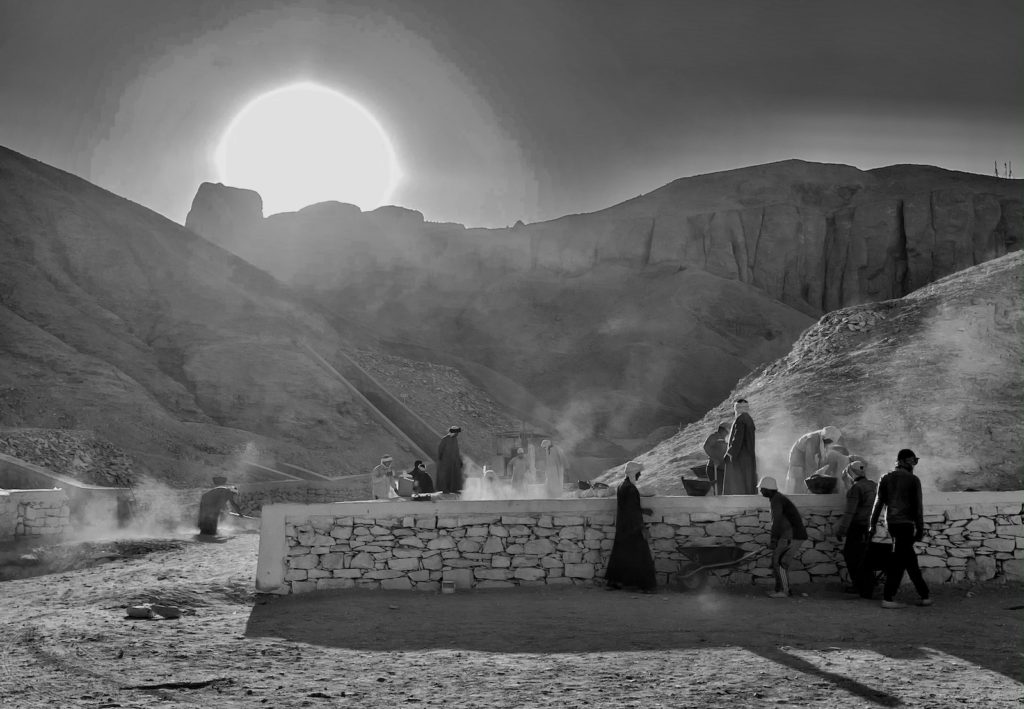
In early morning light we navigated Luxor’s empty streets as ethereal hot air balloons floated high above the Nile River Valley. Then we abruptly crossed over into another realm, and I do mean ‘abrupt’. At one moment, we saw lush fields of glowing green sugar cane, bathed in the luminous dawn light. In the next, we entered a world of dusty sand and rock, stretched up to the high cliffs and out to the endless desert. Nothing grows here in the Land of the Dead, except heaps of debris dug out of ongoing excavations.
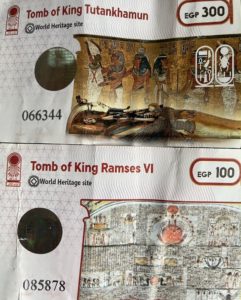
We were some of the first tourists to board the ‘choo choo’, as Neveen called our shuttle, for our ride up into the Valley of the Kings, and she explained the tomb system and our various ticket options. On any given day certain tombs are open, others closed, and our general admission ticket gave us entrance to three of the open tombs, our choice. If we wanted to buy separate tickets for King Tut’s and Ramses V/VI’s tombs, we could also do that.
Of course we did that, and by the time Neveen finished our orientation, Padre and I high-tailed it to the Tut and Ramses V/IV tombs. We saw them all by ourselves, not a soul around, and gained favors from the attendants, as well.
Reasons. Thank you, Neveen, for the early start – never would have happened without it.
TIPS R US, AND THE KING TUT TOMB MYSTERY
So the ‘No Photos’ sign is prominently featured outside Tut’s tomb (KV 62). We quietly descended into King Tut’s tomb alone, in awe, until Padre pulled out his phone to snap a pic. I reminded him, “No pictures in here, remember?” but turns out the friendly tomb attendant lurked close behind. He piped up, ‘Take photo?” Then he gestured for us to snap away. Huh?
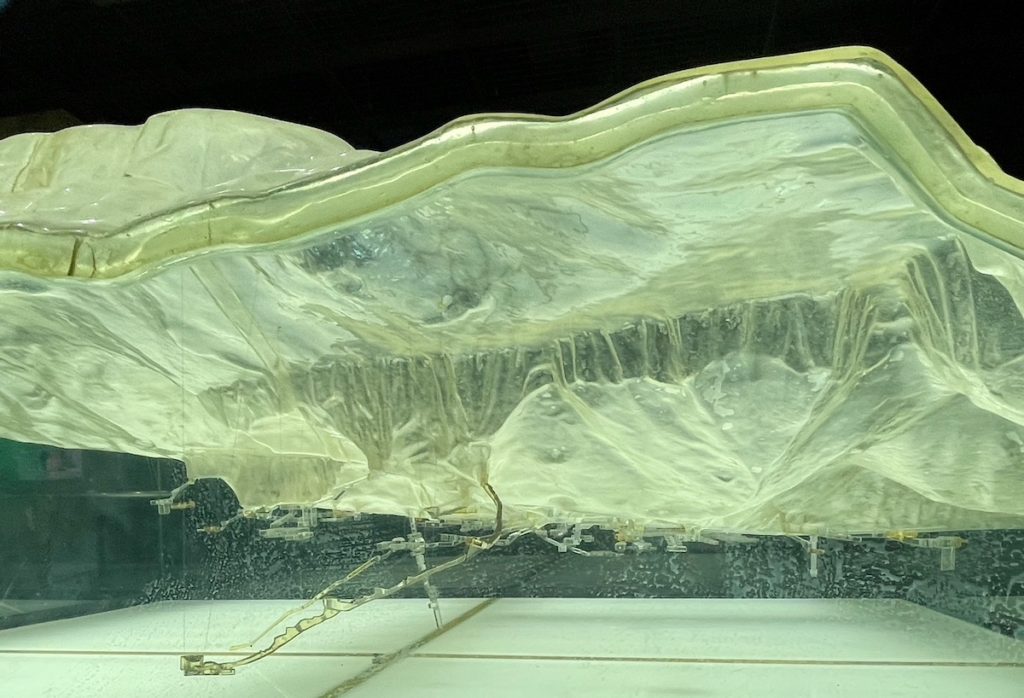
Not only did the attendant say it was ok, he snapped our forbidden photo with the mummy, and of course we negotiated a tip. So ‘no’ means ‘no’ sometimes, and ‘maybe’ or ‘yes’ in other situations. I suspect the fact we were alone influenced the attendant’s actions, since later when the tombs filled up I didn’t see attendants snapping photos anymore. So here’s another reason to be early, at least if you’re a rule breaker type and want to play fast and loose with the ‘rules’ such as they are.
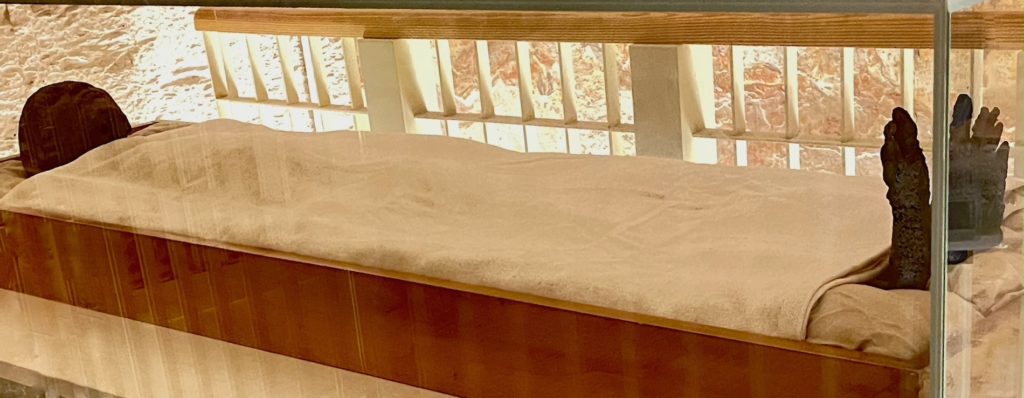
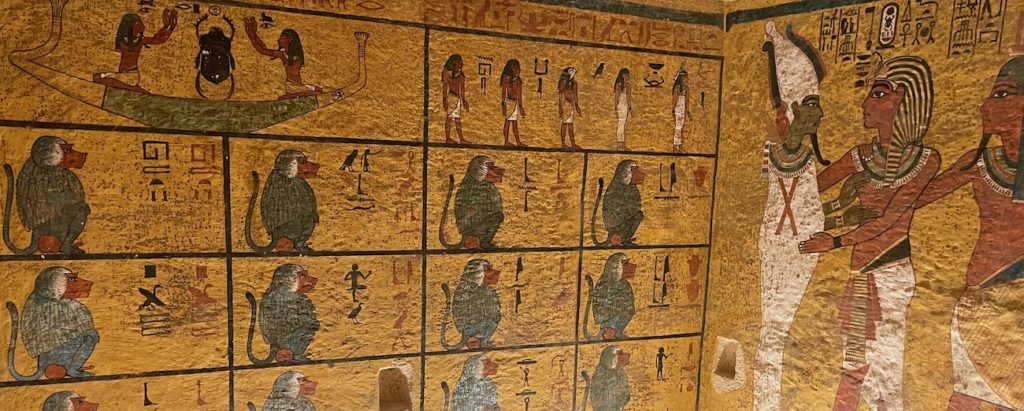
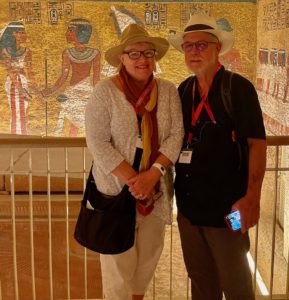
Speculation abounds as to what’s behind the back walls of Tut’s tomb, since some radar evidence suggests that the long-lost tomb of Queen Nefertiti may be sequestered away in hidden chambers back there.
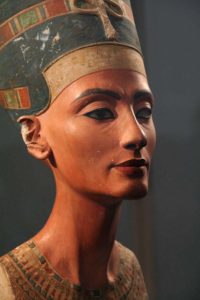
Wouldn’t that be thrilling to see another intact tomb, one much larger than King Tut’s, emerge from the Valley’s depths in our lifetime? We’ll have to wait until the scientists figure it out, and that might be soon, or never. Many problems, including modern air conditioners. Go figure. Anyway, the search goes on, and here is a link to one of the latest articles updating their progress, if you’re as fascinated as we are with all the latest discoveries.
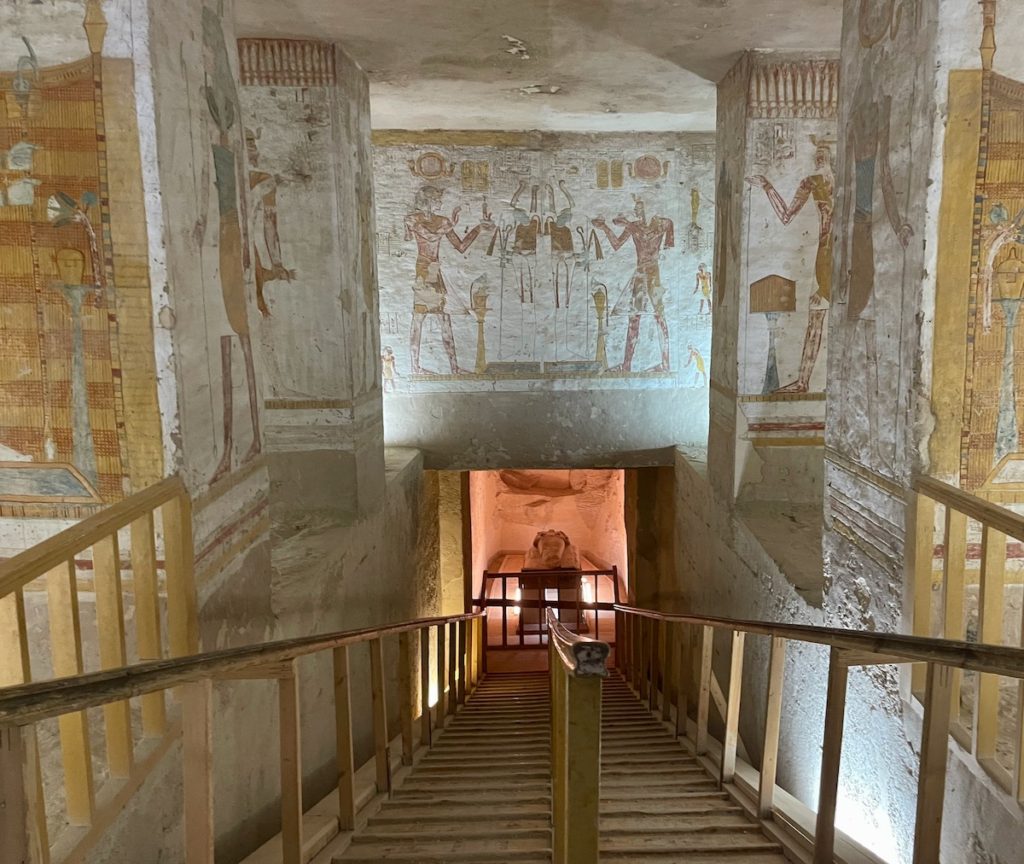
SPIDERMAN TOMB ATTENDANT GETS THE GODDESS NUT PIC
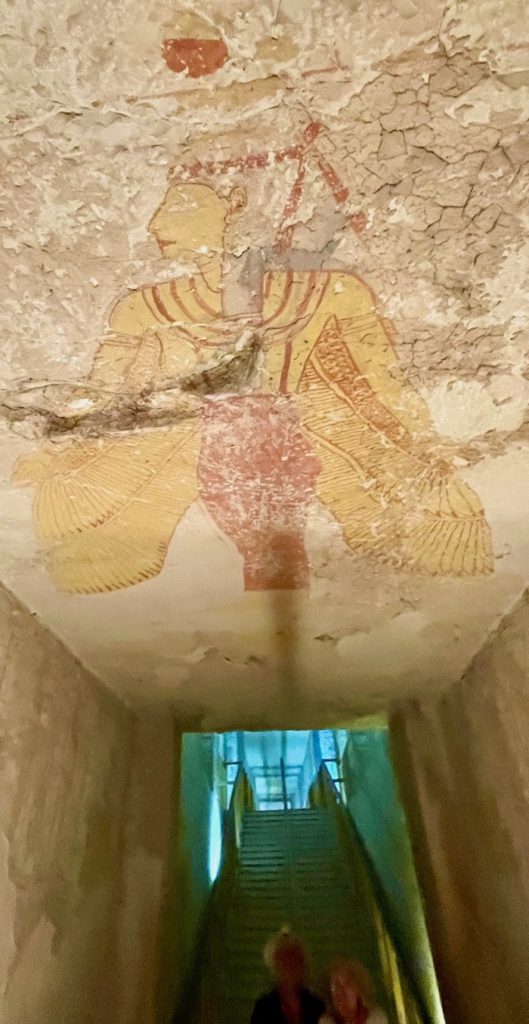
In one of the last tombs we visited, that of King Seti II (KV 15), we were the only tourists, with an attendant following closely behind. We assumed we’d get the offer of a photo, and we did, but then there was more.
This guy gestured for my phone, then climbed over the burial chamber barrier, snapping photos underneath, on top of, and behind the sarcophagus. Then the guy climbed up and balanced with one foot ON the railing to take more photos. Yikes!
By this time I was begging him be careful, to get down, but he ignored me, so obviously he was skilled at the tomb gymnastics. And even though most of his sarcophagus photos came out blurry, he snapped one that shows the remarkable ceiling painting of the Goddess Nut, whose wings stretch protectively over the sarcophagus below.
Nut, the goddess of the sky and all heavenly bodies, protected the dead and helped the sun, moon, and stars travel through the skies. The Egyptians believed that during the day, heavenly bodies would make their way across Nut’s body. Then at dusk they would be swallowed in the darkness, and pass through her belly during the night to be reborn at dawn. That’s why so many tombs include elaborate ceiling scenes of the celestial bodies, with the Goddess Nut featured prominently in the narratives.
So we ended up with a one-of-a-kind photo of Goddess Nut from this tomb – you really can’t get the snap from behind the railing. And how many people have a (bad) photo of themselves, shot from inside the burial chamber looking out over a sarcophagus? Probably just us, and anyone else who happened to end up in Seti II’s tomb alone with our very own spiderman-tomb attendant.
Spiderman-attendant bargained hard for a big tip and of course he got it. And then he added that I was beautiful, so I almost gave him more until Padre nudged me to make like a tomb robber and leave with the goods, post-haste.
The tomb of Ramses V/VI (KV 9), the other ‘extra fee’ tomb, is considered one of the most sophisticated and complete in the Valley. We were enthralled with the burial chamber ceiling, with a double image of Nut, swallowing the moon and giving birth to the sun, in an endless cycle of new life. Egyptians believed that this cycle would help revive the soul of any dead pharaoh lying below, and it certainly revived us. The colors of the paint still shine, and the detail astonishes. We craned our necks back for the longest time, to take in its intricacy and vibrant colors.
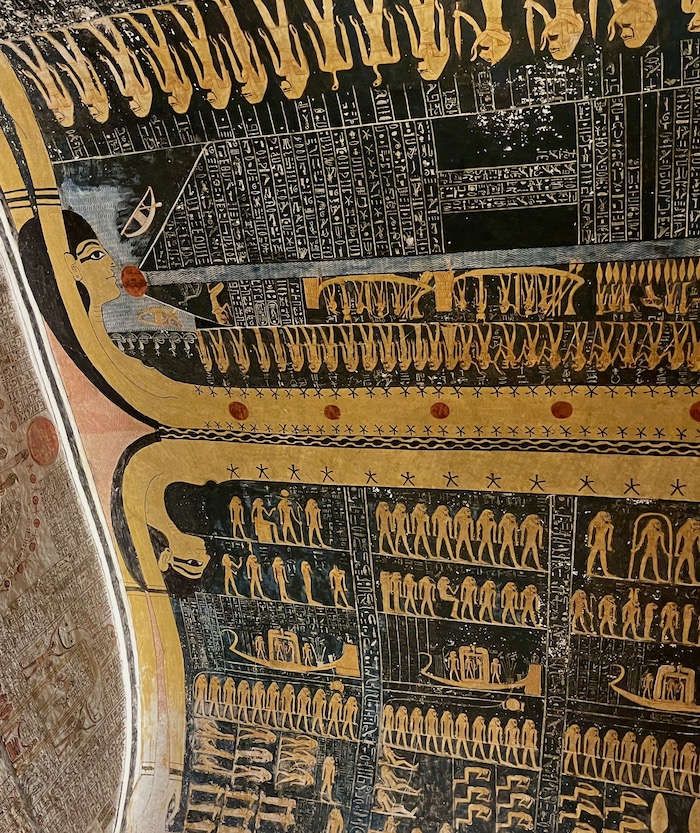
We tried to take photos, but they just don’t capture the ceiling’s magnificence. So if you visit Egypt, we highly recommend paying the extra to enter KV-9, just to see this spectacular ancient creation. The rest of the tomb is beautiful as well, and we left shaking our heads at how amazing it all was.
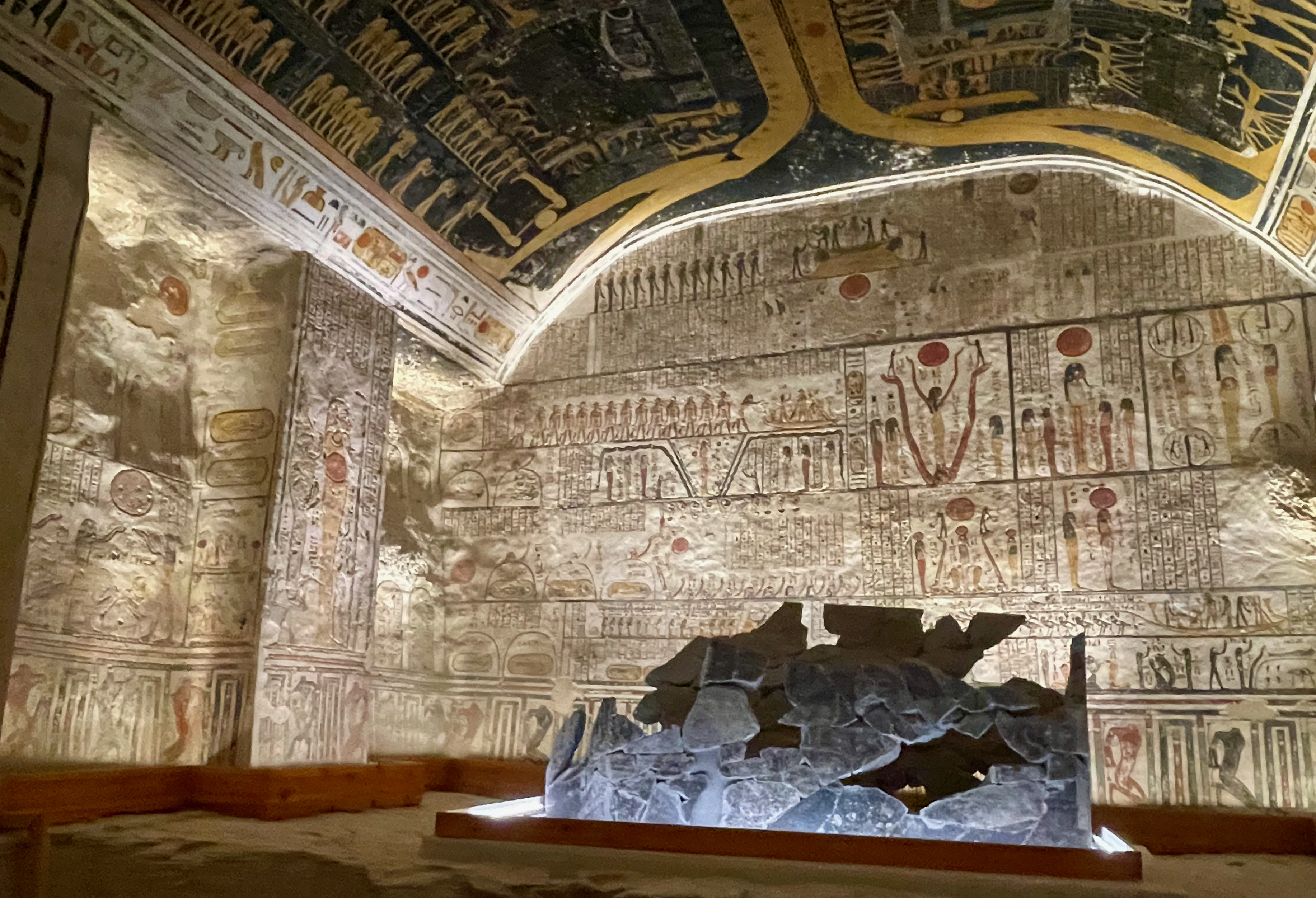
SO ABOUT THOSE MUMMIES
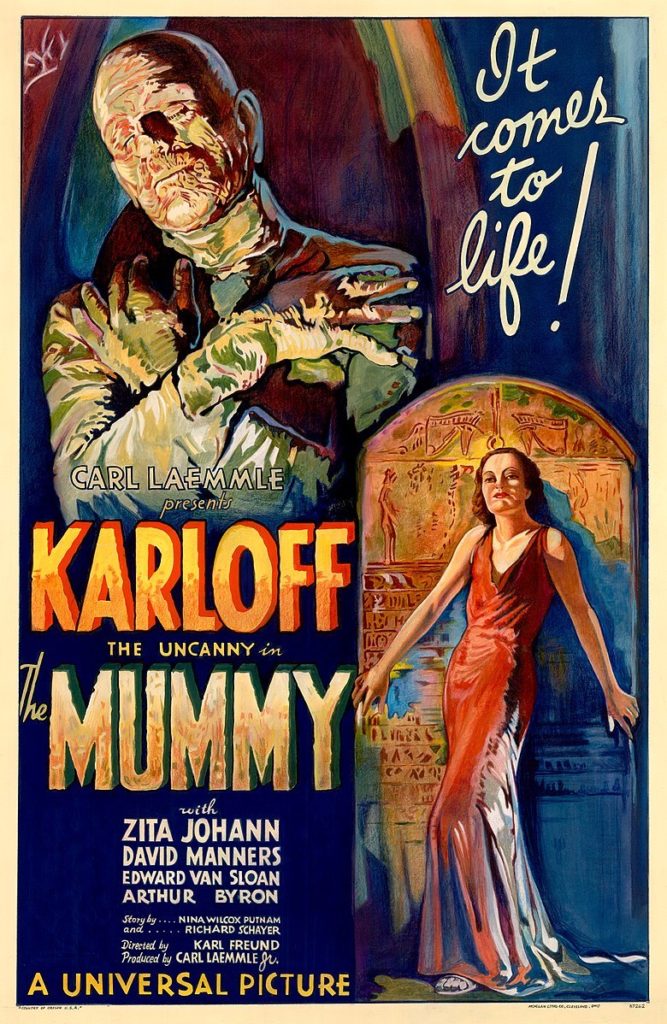
Mummies get a bad rap. Padre loves them, of course, and won’t stop sharing snippets from his book on mummies, by Dr. Bob Brier, famous Egyptologist.
‘Did you know that in the 1800s people used to sell mummies for $4?’
No.
‘Did you know that the ancient Egyptians had problems with worms, because they walked around barefoot and the slimy creatures got under their skin somehow?’
Didn’t know that.
Finally I scrunched my face in the ‘ewww’ expression and shot him the look that says STOP IT. l confess that I did like one snippet Padre shared, however.
‘Did you know that the first mummies Dr. Brier could get for his students were cat mummies?’
No.
‘But the cat people got too attached to the cat mummies, so he switched to fish mummies, to which students did not get so attached.”
Wonder why.
Anyway, we only saw one mummy, King Tut’s, during our hike down into five ancient tombs. Yet we learned so much about the pharaohs who BECAME mummies, and they were definitely not in a death cult. Images of the sun featured prominently in every one of their tombs, and they worshipped the sun god Amun-Ra. Egyptians LOVED the sun, even though their modern reputation tends to suggest they loved death much, much more.
Their reputation as creepy death worshipers stems from all those Mummy movies, I suspect, where the mummified dead rise from their rags to release the ten plagues of Egypt upon mankind. Yikes. We have one plague right now….can you imagine 10? Now THAT’S a horror story for the ages.
Egypt’s real mummies were not into hurling plagues down upon us or haunting us, as Hollywood’s mummy horror genre has led us to believe. Hollywood’s story is, in fact, quite opposite the truth, because dead pharaohs just wanted to be left alone in the afterlife for eternity, living their best life ever.
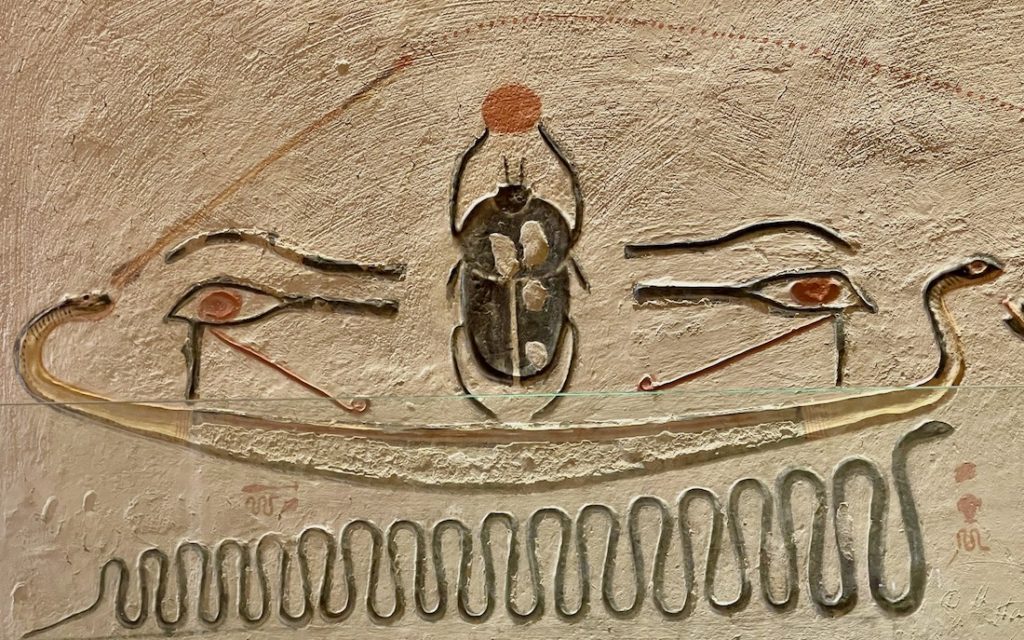
Even the creepy stuff on the walls was about LIFE (well, maybe not the decapitated enemies). Scarabs were not creepy; they were a symbol of rebirth. The pharaohs’ journey through the underworld on a solar boat was a journey to a rich new life. Gods and goddesses protected the pharaoh from threats such as snapping crocodiles and striking snakes, and spells painted on walls protected the pharaoh from danger.
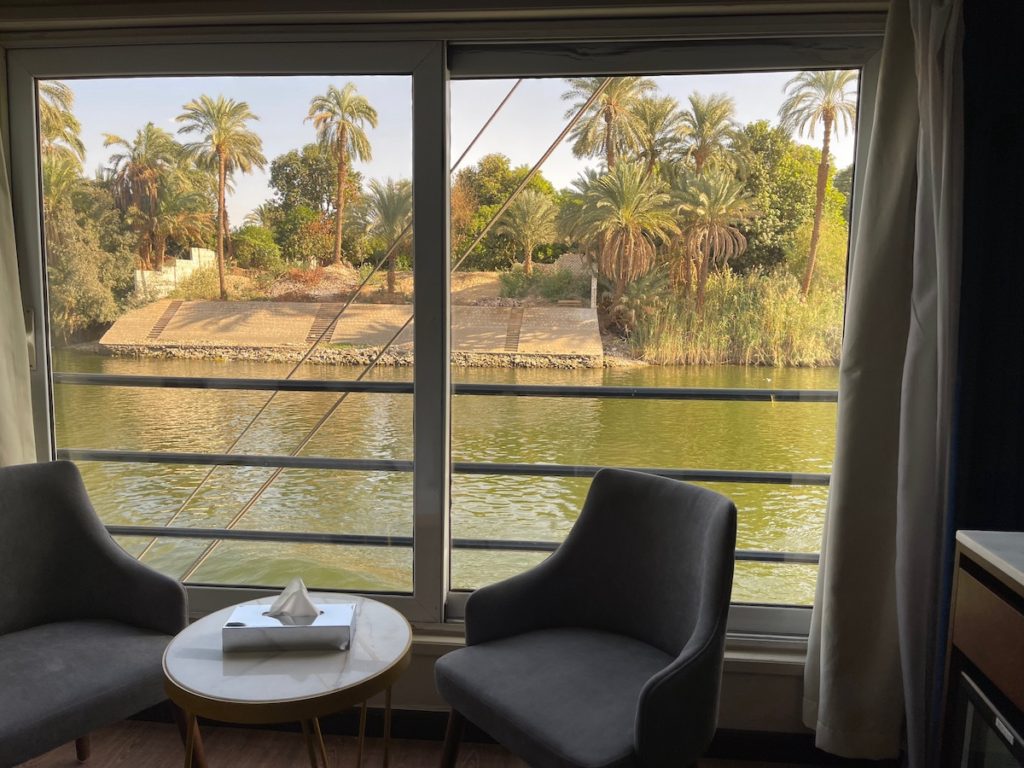
The tomb paintings show that it was about surviving to live once again, in a world very much like the one Egyptians lived here on earth, where the River Nile’s bounty kept even the poorest Egyptians well fed. In fact, Egypt had by far the best standard of living in the known world back then, and historians have noticed that Egypt’s pharaohs seldom set out to conquer foreign lands, like other power-hungry world leaders of the time. I mean, why should they, when they already lived in the best place on earth?
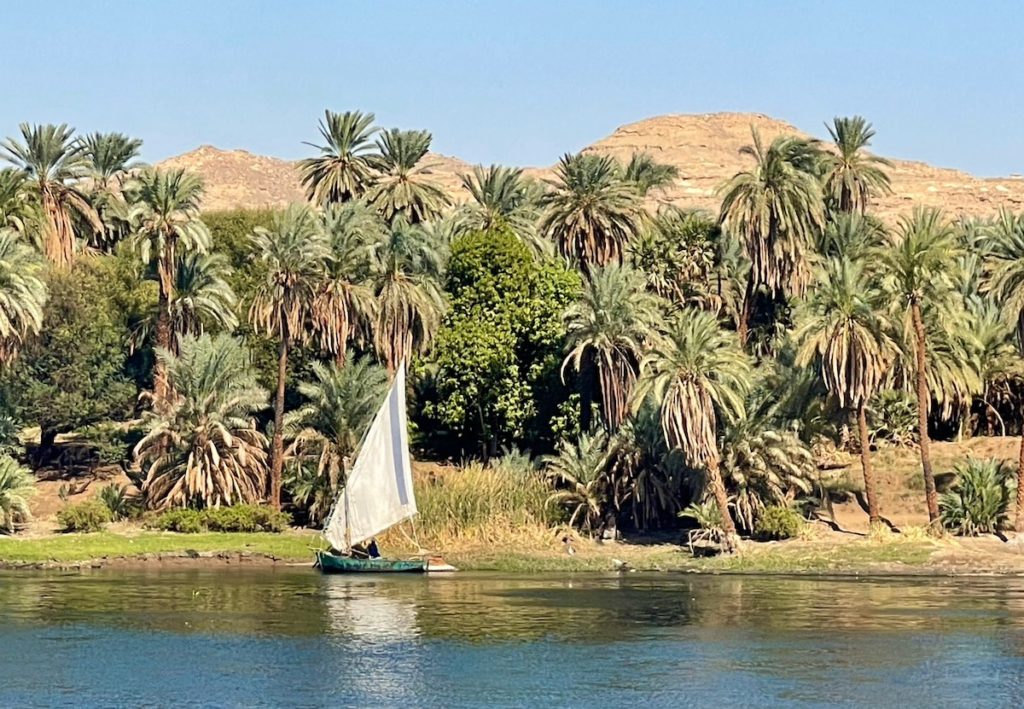
THE SUN WILL RETURN
So on this darkest of days in a strange unsettled time, why not be like the wise old Egyptians who celebrated the sun, and life well lived? The sun will return, hope will return, and spring will inevitably return. It always does.
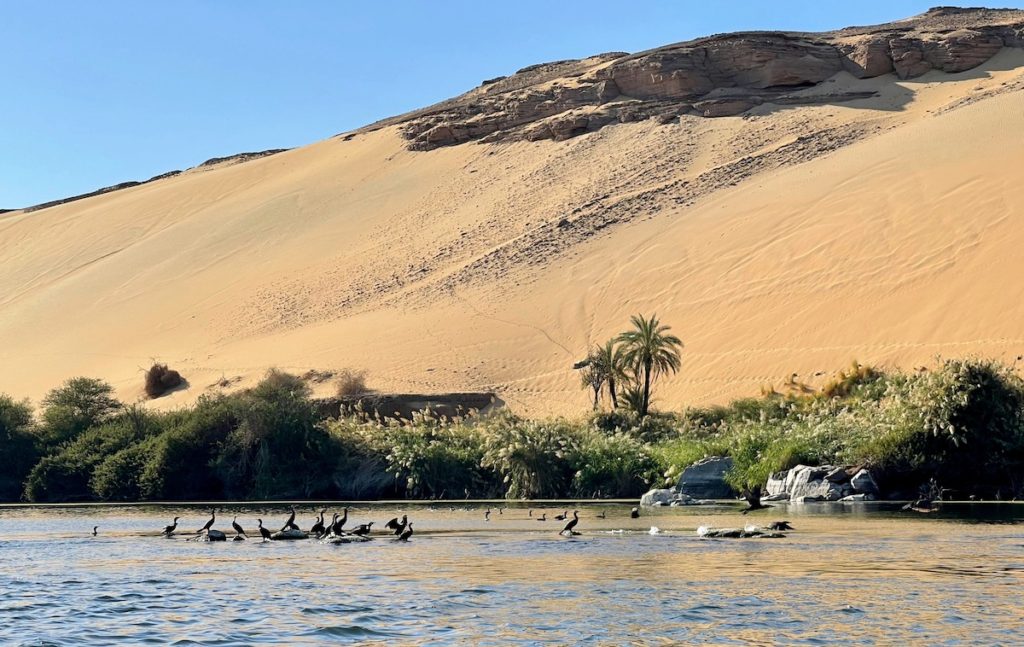
Oh, and another reminder, from the ancients, about gratitude. Ancient Egyptians considered ingratitude to be a ‘gateway’ sin, which led to the sins of bitterness, depression, selfishness, pride and negative thought. And yes, we are beyond grateful for the chance to visit this amazing country, for our lives, for everything. This journey has reminded us in so many ways of how beautiful life is, despite its many frustrations.
So the ancient Egyptians were definitely NOT a death cult. More like a life cult, I’d say, and the more I learn about them the more I appreciate how very wise they were.
I’ll end this post with photos from two more sites:
- The mortuary temple of Hapshepsut, my favorite queen, a lady I’ve already written too much about since I like her so much. (And her temple was spectacular, no surprise there.)
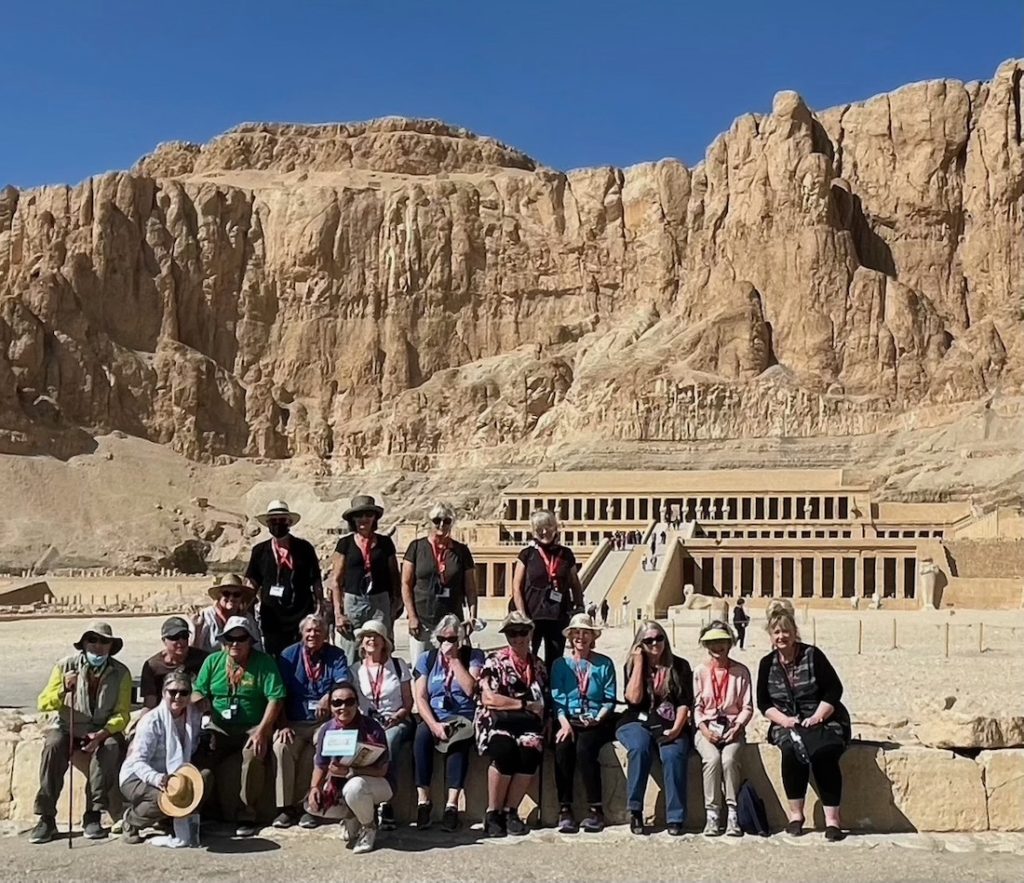
and 2) the Colossi of Memnon, which are colossal, and where new digs turn up astonishing treasure every day, according to Neveen. The rest of our lives we plan to keep tabs on all the latest discoveries. How fun is that? (I mean, who has time anymore to work? Good thing we’re retired. Ha!)
Thanks as always, everyone, for following along!
